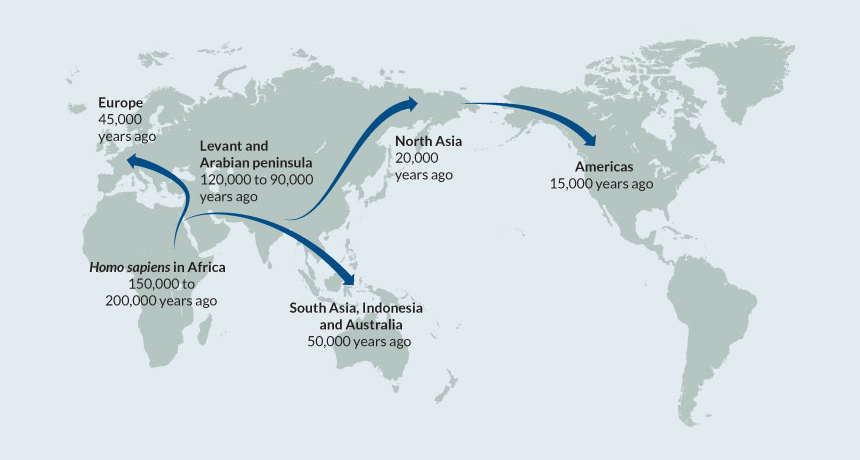Questions for ‘Globe’s non-Africans all descend from a single move out of Africa’

All people across the globe inherited their DNA from people who evolved into Homo sapiens on a single continent. From there, descendants of those earliest humans spread out in waves to settle the rest of the world.
P.B. DEMENOCAL AND C. STRINGER/NATURE 2016